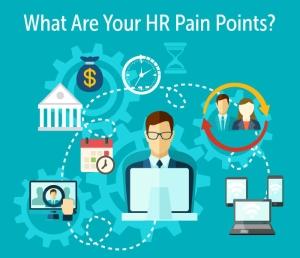All too often, businesses find themselves exposed to unwanted risks due to circumstances that may be beyond their control, like manufacturing errors or man-made or natural disasters. With a solid management plan in place, the risk of many potentially destabilizing circumstances can be lessened, and businesses can move forward with confidence.
A range of operational processes centered on employee productivity serve as the foundation for workforce management (WFM). A WFM plan often enhances a company's capacity for tracking employee attendance, scheduling, and daily performance. Once business leaders fully grasp the principles guiding this approach, they often find WFM metrics to be of essential value to the organization.
What Is Workforce Management?
The goal of workforce management (WFM) is to strategically deploy workers and resources to boost productivity across an organization. Sometimes, when businesses grow their product line or expand into numerous physical locations, the "HR factor" is neglected. A growing business can undergo a range of challenges revolving around their workforce, including:
- A shortage of needed workers
- More significant costs incurred locating and retaining employees
- Minor or major violations of local, state, and federal laws
- Diminished output of goods or services
- A worrying turnover of workers
These challenges may occur due to a lack of planning or ineffective production execution. Successful businesses understand the value of their workforce and focus on high-quality recruitment, training, and staff management. Some businesses do this all on their own, but many others rely on a human capital management strategy to help them achieve their HR goals.
What Is WFM Software?
Generally, WFM software helps businesses maintain programs that aid in managing workforce performance, like employee scheduling and attendance. This software may be used as a stand-alone function, but for many companies, it's part of a larger scope of vendor-supplied HR applications, designed for integration with HR systems.
A key feature of effective WFM software is its ability to offer self-service options. Through these options, employees may be able to monitor their paid time off (PTO) balances and/or request days off from work. When they can complete these (and similar) functions on their own, it frees up busy HR team members from unnecessary paperwork and enables them to focus their strategic energies elsewhere.
Although workforce management tools have existed for a long time, automated time and attendance tracking features — among other key software features — have become much more sophisticated and efficient than in years past.
How Does the Workforce Management Process Work?
While the approach to managing a workforce may differ somewhat from company to company, certain underlying action steps form the essence of workforce management.
Key steps include:
- Assembling data. It's not possible to understand and enhance employee performance without a baseline assessment of current productivity levels. What employee positions are most critical, and how well do employees fulfill their job duties? What areas or job responsibilities are the most difficult to hire for? Assembling information based on current employee productivity and scheduling serves as a first step toward future HR forecasts.
- Predicting work capacity. What will your workplace and workforce ideally look like a year from now or 5 years down the line? Based on your company's priorities, where is the most significant growth likely to take place? Analyzing the data gathered in step 1 may enable you to better predict future needs, which might include expanding the number of employees you have in place. These estimates facilitate long-range workforce planning and help you figure out the best methods of achieving your corporate goals.
- Gauging performance. Tracking employee productivity and their use of time offers insights into levels of individual capabilities and the time needed to complete assigned tasks or projects. When employees take an inordinate amount of time to finish a task or miss a strategic deadline, it can be a signal that either (a) training is needed and/or (b) more hiring is needed to ramp up productivity.
- Evaluating employee output. WFM enables HR and business leaders to assess more accurately how well individual employees (and/or teams) are doing. The process can help answer key concerns, such as whether the right employees are given the right assignments or if a new focus on recruitment may be needed.
Workforce management processes that use available analytics information enable HR to predict future needs better, design a distinct recruitment and retention strategy, and meet HR goals in the years to come.
Benefits of WFM and Why It's Important for Businesses
As noted, improved productivity is a prime goal in workforce management. Built into this overarching goal are many other benefits to the organization:
- Without adequate management, expenses arising out of absenteeism or, conversely, too much overtime can be considerable. WFM enables managers and others to monitor and manage costs.
- WFM offers significant benefits in terms of employee scheduling. For example, if a major sales campaign is planned or some other key corporate initiative is forthcoming, it may be essential to prepare for shift vacancies or other scheduling issues.
- Business owners sometimes learn about federal, state, and local violations too late. Automated processes resulting from WFM — and the accompanying record-keeping — may help employers avoid or minimize their risk of non-compliance.
Several other key areas may be favorably affected when implementing workforce management, including payroll, tracking time, scheduling, and so on. When fully incorporated into a company's culture, WFM can dramatically boost understanding of worker time and attendance and help get more work done.
Workforce Management Software: What Features To Look For
What type of WFM software is best for your company? While organizational workforce needs and challenges may differ in some respects, businesses want to monitor and boost productivity and better manage their workforce. Choosing the right WFM software involves a deeper understanding of the specific issues your company might face.
Desired workforce management features often include software tools for:
- Predicting the need for additional workers, as in a seasonal business
- Establishing employee schedules that boost productivity
- Generating user-friendly, self-service options
- Managing employee overtime and absences
- Following local, state, and federal workplace requirements
- Using mobile devices to manage workflow and employee time
Mobile or desktop software solutions are often most effective when integrated within a larger HR approach to employee productivity. WFM software can be incorporated into an existing HR system, enabling HR managers and others to plan strategically for staffing needs and the appropriate distribution of mission-critical job responsibilities.












